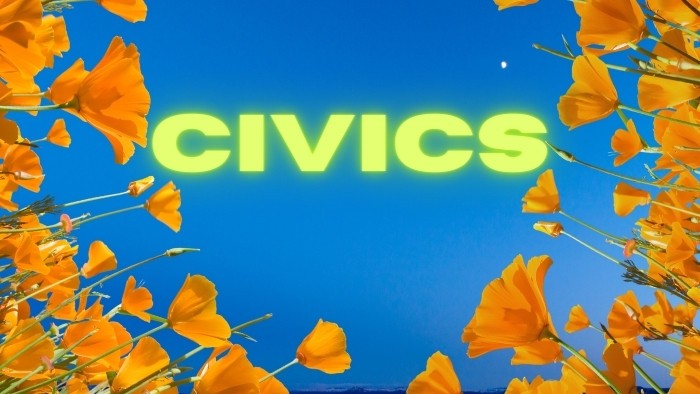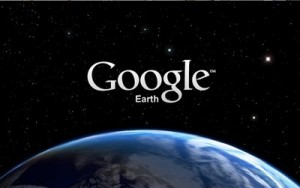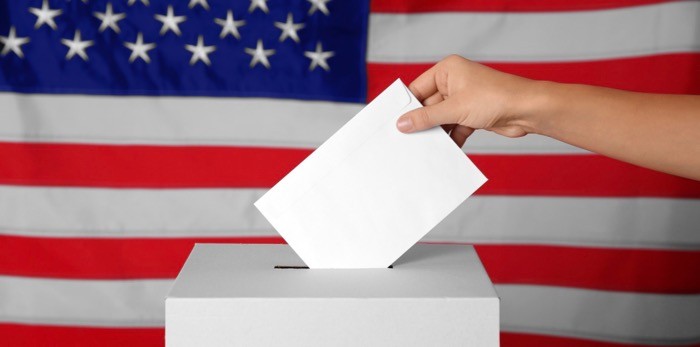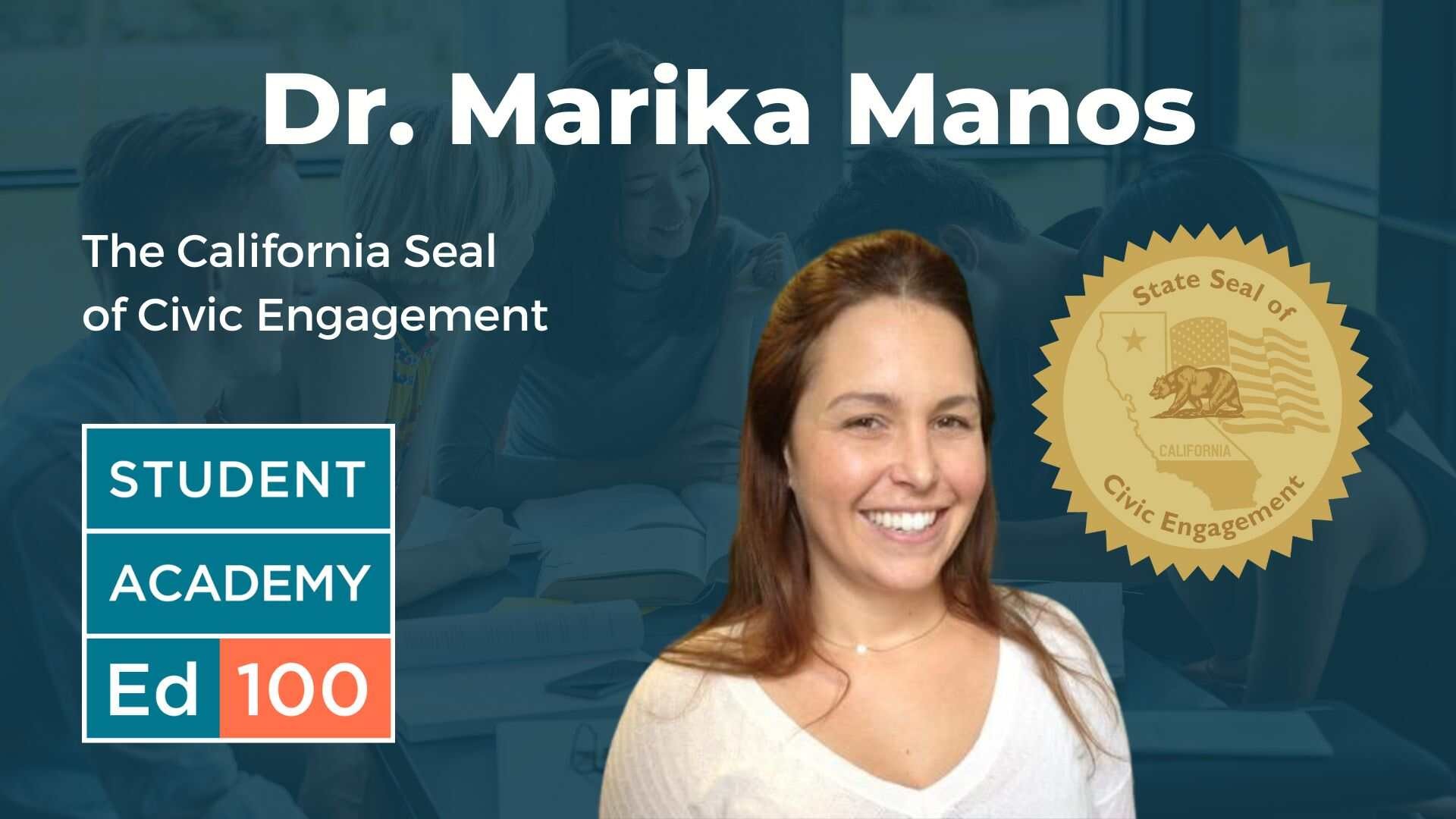
Civic readiness and engagement is a central purpose of universal public education.
In This Lesson

How do schools teach civics?
How is an educational framework used?
What is the difference between an educational standard and a framework?
What history subject is taught in each grade?
What is the Seal of Civic Engagement?
How are history textbooks selected in California?
Can kids pre-register to vote in California?
How is geography taught in school?
▶ Watch the video summary
★ Discussion Guide
Schools and teachers convey civic knowledge and norms to each generation of students. The facts about these subjects don't change dramatically from year to year, but public understanding of them can. How does civic education in California actually work?
Education standards and frameworks for history
As children advance through grades, they learn about their community, their state, their country and the world. The expected content of education in each grade level is defined by state standards that are further refined through curriculum frameworks. These frameworks are periodically reviewed and adopted by a vote of the State Board of Education.
When the History and Social Science framework was last revised and adopted in 2017, it increased emphasis on civic learning along with other priorities. The revised framework also added financial literacy, voter education, genocide, and a broadened view of the contributions of diverse people including lesbian, gay, bisexual, and transgender (LGBT) Americans and people with disabilities.
After an educational framework is adopted, changes trickle their way toward the classroom experience in each grade level. Publishers revise textbooks and learning materials. Schools select materials and purchase them. Administrators schedule training for teachers to learn about the materials and discuss them. Finally, teachers incorporate the materials into their lesson plans. It takes time for a change to work its way through.
Want to know what's taught in each grade? Here's a summary of the themes:
Grade |
Topic |
|---|---|
Kinder |
Learning and Working Now and Long Ago |
1 |
A Child’s Place in Time and Space |
2 |
People Who Make a Difference |
3 |
Continuity and Change |
4 |
California: A Changing State |
5 |
United States History and Geography: Making a New Nation |
6 |
World History and Geography |
7 |
World History and Geography: Medieval and Early Modern Times |
8 |
United States History and Geography: Growth and Conflict |
9 |
Elective Courses in History–Social Science |
10 |
World History, Culture, and Geography: The Modern World |
11 |
US History and Geography: |
12 |
Principles of American Democracy (One Semester) |
California's content framework reflects the influence of the C3 Framework (C3 stands for "College, Career and Civic life") developed by the National Council for the Social Studies.
In the past, California's school districts had limited choices when it came to textbooks and other instructional materials. The school finance system provided school districts with dedicated categorical funds usable only for instructional materials. It was sort of like coupons: districts could use the funds only to purchase books that had been specifically approved by the State Board of Education.
In 2012, California's legislature adopted the Local Control Funding Formula (LCFF), which eliminated most categorical funds and placed the money in the hands of school districts instead. Districts have significant freedom to choose their own instructional materials, particularly for high schools classes. They must certify that all students have access to materials that align with state standards.
Civics
"I'm just a bill, yeah I'm only a bill..." There's a lot to be said for the power of music to communicate learning content. Half a century ago, Dave Frishberg's catchy song for Schoolhouse Rock taught a generation of Americans how an idea becomes a law. It's still relevant.
“The qualifications for self-government are not innate. They are the result of habit and long training.” —Thomas Jefferson
It's also not enough.
Decades ago, a survey found that only 38% of American adults could name the three branches of government, but 59% could name the Three Stooges. The good news is that this grim statistic has improved. In 2022, a survey found that nearly half of Americans can name the three branches of government. The bad news is that a quarter can't even name one.
The civic mission of schools
One of the critical functions of public education is to prepare citizens to participate in our democracy. There are reasons for concern.
The most basic expression of civic participation is voting, which reflects the public’s sense of engagement or disengagement in their democracy. Young voters and nonwhite voters tend to participate at particularly low levels, especially in primary elections. Primary elections are very important in California because, since 2012, the state has used a top-two primary system for major offices. Depending on the circumstances, the primary can decide the outcome.
But voting is just one expression of civic engagement. In 2011, the Annenberg Institute underwrote an important report, Guardians of Democracy, which recommended "proven practices" that schools can use to deliver on the civic mission of schools. The practices fall in six categories, summarized here:
|
Summary of “Proven practices” for the civic mission of schools |
||
|---|---|---|
|
1 |
Classroom instruction |
Formal instruction in U.S. government, history, and democracy increases civic knowledge. This is a valuable goal in itself and may also contribute to young people’s tendency to engage in civic and political activities over the long term. However, schools should avoid teaching only rote facts about dry procedures, which is unlikely to benefit students and may actually alienate them from politics. |
|
2 |
Discussion of Current Events and Controversial Issues |
When young people have opportunities to discuss current issues in a classroom setting, they tend to have greater interest in politics, improved critical thinking and communications skills, more civic knowledge, and more interest in discussing public affairs out of school. Conversations, however, should be carefully moderated so that students feel welcome to speak from a variety of perspectives. Teachers need support in broaching controversial issues in classrooms since they may risk criticism or sanctions if they do so. |
|
3 |
Service learning |
Service programs are now common in K–12 schools. The ones that best develop engaged citizens are linked to the curriculum. |
|
4 |
Extracurricular Activities |
Students who participate in extracurricular activities in high school remain more civically engaged than their contemporaries even decades later. Everyone should have opportunities to join high school groups, and such participation should be valued. |
|
5 |
Student Participation in School Governance |
A long tradition of research suggests that giving students more opportunities to participate in the management of their own classrooms and schools builds their civic skills and attitudes. |
|
6 |
Simulations of Democratic Processes |
Simulations of voting, trials, legislative deliberation, and diplomacy in schools can lead to heightened political knowledge and interest. |
In 2014 many similar themes and recommendations were echoed in a report by the California Task Force On K-12 Civic Learning. This is a good example of how task forces can help form a consensus for policy action.
The Annenberg Institute has tracked trends in Americans' civic knowledge for decades. Each year on Constitution Day (September 17), it releases annual survey results that quantify the appalling state of basic civic knowledge. One bright spot: the findings demonstrate that students who take a civics course in high school tend to score higher than those who don't.
Register at 16, vote at 18
There are some reasons for optimism about the future of effective civics education in California.
Although students can't vote until they are 18 in California, they can register to vote up to two years ahead of time. This means that the first step to election participation can take place while students are in high school and actively learning about civics.
Under the direction of the Legislature, the office of the California Secretary of State has been working to increase pre-registration, with mixed results. Unsurprisingly, plopping a stack of pre-registration forms in the school office isn't enough to get things going — a successful campaign requires deeper organization and engagement.
To increase ongoing focus on civic learning, in 2021 the California State Board of Education established the State Seal of Civic Engagement, an honor that students can earn as an addition to their high school diploma. The program has struggled for simple, logistical reasons: there are thousands of high schools in California. In each one, someone has know about the program, understand the criteria, identify students who earn the honor, and know how to communicate with the appropriate person at the school district central office about it. That person, in turn, has to order physical stickers by early April at the latest, collect information from each school about which students will receive the honor, and arrange for the stickers to be affixed. All in time for graduation. Simple, right?
Geography
 Back in the day, many school teachers kept a dusty globe on top of a filing cabinet, periodically pulling it down to point out countries that had been renamed. Some classrooms still have globes, of course, but today’s teachers have better, more up-to-date options, including Google Earth. Learning the states and capitols? Online games are the best way to learn them, free.
Back in the day, many school teachers kept a dusty globe on top of a filing cabinet, periodically pulling it down to point out countries that had been renamed. Some classrooms still have globes, of course, but today’s teachers have better, more up-to-date options, including Google Earth. Learning the states and capitols? Online games are the best way to learn them, free.
Access to digital learning resources remains uneven, which has a significant impact on geographical literacy.
Pakistan,
Afghanistan,
Uzbekistan,
Iraq —
Can you name
the places on
this blue-green
spinning rock?
Technical jobs related to geography have been growing for decades, driving increased demand for postsecondary education in the field. The College Board offers an Advanced Placement Human Geography exam, which roughly a quarter of a million students take each year.
American students are not star performers when it comes to geography, and national annual testing shows that today's students are basically neither better nor worse than their predecessors when it comes to geographic knowledge.
This is a shame, because the scores show a lot of room for improvement. In 2017 the New York Times commissioned a national poll to see what proportion of American adults could accurately locate North Korea on a map. According to the report, "just 36% got it right." The answers were literally all over the map. In a followup question, the poll asked whether America should take military action against North Korea. "Respondents who could correctly identify North Korea tended to view diplomatic and nonmilitary strategies more favorably than those who could not."
California's grade-level standards for geography are included as part of the social science framework.
Thinking globally
This lesson focused on civic learning with an emphasis on local, state and national concerns. The next will consider language learning, which can connect students to a more global perspective.
This lesson was last updated in July, 2023.
Previous updates:
December 2017,
October 2018
April 2019
June 2019
CHAPTER 6:
The Right Stuff
-
The Right Stuff
Overview of Chapter 6 -
Grade-Level Standards
What is the Common Core? -
Is School Challenging Enough?
Academic Rigor -
Literacy in California
Ensuring All Kids Can Read, Write and Speak English -
STEM Education in California
Science, Technology, Engineering and Math -
Why Are Tests Important?
Why Tests Matter and How They Work -
Technology in Education
Tools for Teaching and Learning -
Student Engagement
How to Make School Interesting -
Arts Education
Creativity in California Schools -
P.E. and School Sports
How Does Sweat and Movement Help Learning? -
Field Trips
Beyond the Classroom -
Career Technical Education
Vocational Learning, Dual-Enrollment, and Internships -
Service Learning
Civic Engagement and Helping Others -
Teaching Soft Skills
Social-Emotional Learning -
Can Values and Habits be Taught?
Character Education -
Civics, History and Geography
How Do Kids Learn About Their Country and the World? -
How do Kids Become Bilingual?
World Language Learning in California Schools -
Financial Literacy in California
Learning to Earn
Related
Sharing is caring!
Password Reset
Search all lesson and blog content here.
Login with Email
We will send your Login Link to your email
address. Click on the link and you will be
logged into Ed100. No more passwords to
remember!
















Questions & Comments
To comment or reply, please sign in .
Carol Kocivar April 12, 2025 at 7:12 pm
programs
Research Findings
Lesson Plans
Professional Learning
Videos and Podcasts
Self-Paced Courses
Other Resources
https://civiced.org/about-the-center
Carol Kocivar December 28, 2024 at 3:48 pm
https://calmatters.org/education/k-12-education/2024/12/civics-education/
"All high school students in California are required to take a one-semester government course to graduate. But there’s wide variation in how schools teach that class. For example, some of those classes include hands-on projects that show how the Constitution is relevant today, while others adhere to dry textbook material that’s less engaging. "
Carol Kocivar August 4, 2022 at 1:39 pm
The 2022-23 State Budget provides an increase of $14 million one-time to support county offices of education in developing model curricula related to the Vietnamese American refugee experience, the Cambodian genocide, Hmong history and cultural studies, and Native American studies.
Carol Kocivar May 24, 2022 at 12:00 am
California's state seal of civic engagement: lessons from year one.
https://networkforpubliceducation.org/blog-content/john-merrow-parents-rights-the-war-on-public-schools/
Carol Kocivar May 26, 2022 at 2:25 pm
Selisa Loeza October 25, 2021 at 10:48 pm
It was actually the now Director of the UCLA branch, who inspired my care in civic engagement when he was my junior year AP History teacher.
Check out for more resources:
https://chssp.ucdavis.edu/
francisco molina August 13, 2019 at 11:42 am
Sonya Hendren August 19, 2018 at 6:14 am
https://capta.org/focus-areas/education/curriculum/civic-mission-of-schools/
What Families and PTAs can do to support civic learning:
https://capta.org/focus-areas/education/curriculum/civic-mission-of-schools/what-families-and-ptas-can-do-to-support-civic-learning/
Caryn August 22, 2018 at 9:27 am
Carol Kocivar June 27, 2018 at 4:18 pm
This report provides a portrait of how complex and varied civics education is in the United States, using student performance, state policies, teacher characteristics, and survey results as windows into students’ experiences. Overall, the 2018 Brown Center Report argues that education policy and practice in the United States should place greater emphasis on schools’ role in supporting and strengthening American democracy.
Jeff Camp May 1, 2018 at 11:20 am
The Teaching Channel has produced a guide, Educating for Democracy, that brings together resources from across the nation on how to assess students’ civic learning. Among the topics, it examines capstone graduation projects, state- and district-level civic assessments, a rubric on civic writing, and online assessments to develop civic reasoning created by Stanford University.
Jeff Camp September 15, 2017 at 11:28 am
Carol Kocivar July 14, 2016 at 8:22 pm
Julie Silverbrook, Executive Director of The Constitutional Sources Project, spells out concerns in a piece in The Washington Times.
http://m.washingtontimes.com/news/2015/sep/8/constitutional-literacy-the-crisis-in-civic-educat/
Carol Kocivar June 10, 2016 at 2:08 pm
Whatever your political persuasion, this election season is a great chance to engage kids in a real life civics lesson. From discussing the pros and cons of candidates, to analyzing media messages, to simply learning what a primary election is all about, this is a great week for kids to learn more about our democracy. What can parents do?
See the Ed100 blog for more..../politics-for-kids/
Carol Kocivar January 26, 2016 at 11:36 am
* Highlights proven strategies for implementing high-quality civic learning
*Provides suggestions for how to implement each practice in schools and classrooms
You can download it here: http://www.ecs.org/ec-content/uploads/Six-proven-practices-update_r2.pdf
Jeff Camp - Founder November 7, 2015 at 10:22 am
Students learning about civics might be interested in this game: https://www.icivics.org/
Jeff Camp - Founder May 21, 2015 at 10:17 pm
Tara Massengill April 21, 2015 at 6:13 am
g4joer6 April 20, 2015 at 9:00 am
cnuptac March 26, 2015 at 11:08 am
Sherry Schnell February 5, 2015 at 9:05 pm
Mary Perry September 21, 2014 at 8:50 am